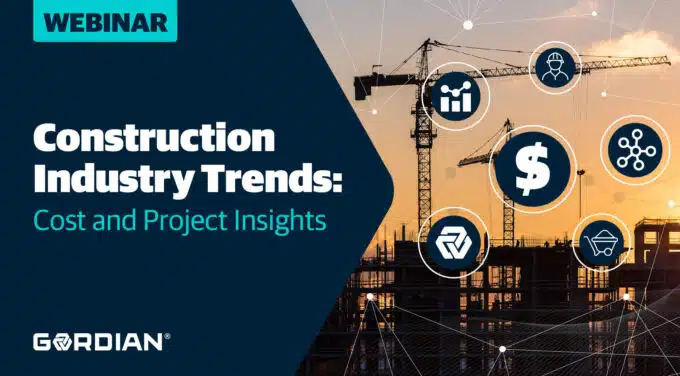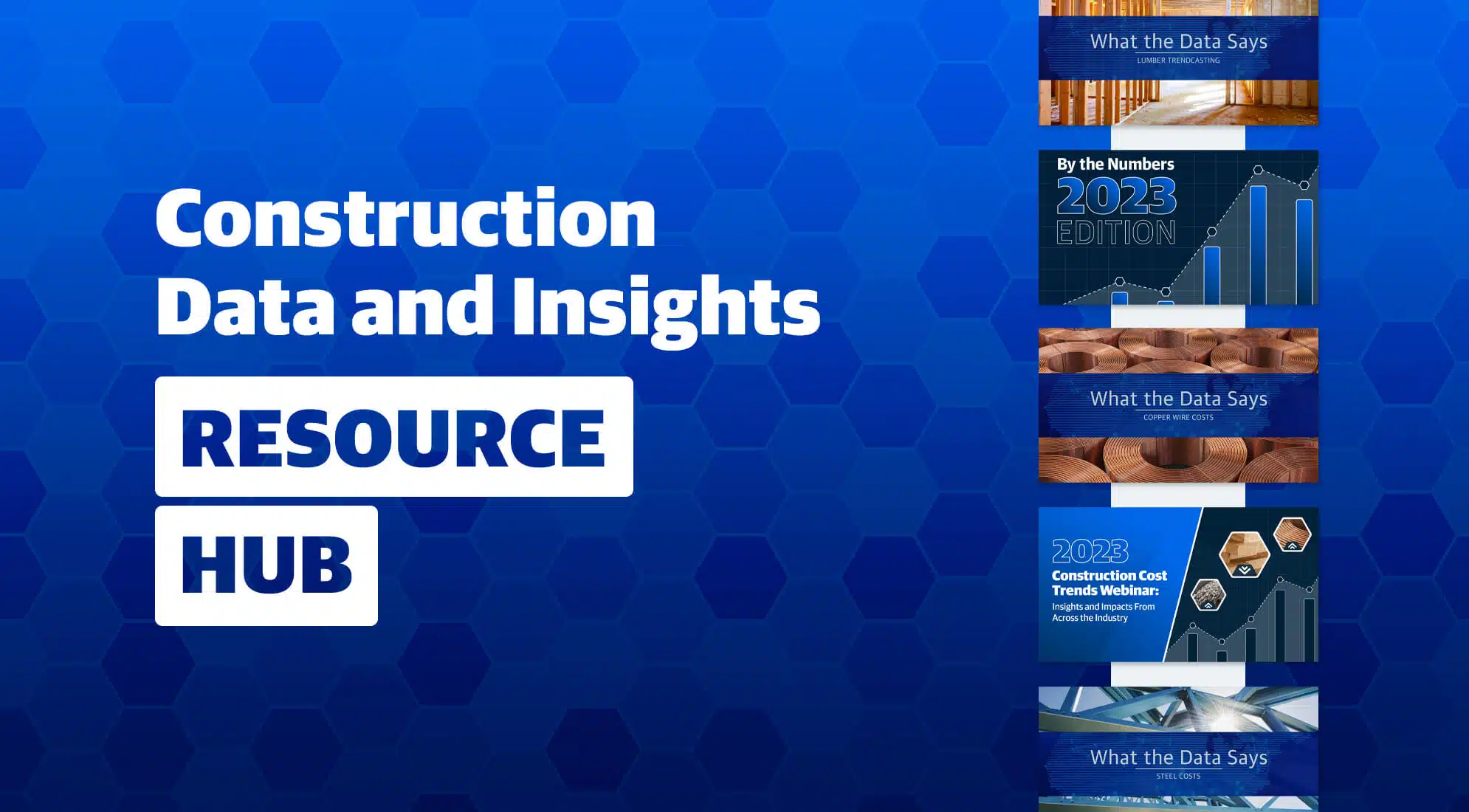The construction industry is in a state of flux. From policy shifts like the Build America Buy America Act (BABAA) to unpredictable lumber market trends, A/E/C professionals are seeking clarity. In Gordian’s Construction Industry Trends: Cost and Project Insights webinar, we addressed these uncertainties head-on, providing valuable insights into the future of construction costs as we approach 2024.
Understanding these trends directly impacts business decisions and prepares industry leaders for the challenges ahead. Gordian’s data, derived from real-time events and the intricacies of labor wage dynamics, serves as a guide to navigating the complexities of the construction landscape.
Here are answers to a few frequently asked questions from the webinar. Dive in to equip yourself with the knowledge you need to lead confidently in the construction industry’s ever-changing terrain.
Question 1: How is RSMeans Data addressing changes in estimating Federal contracts with new Buy American, Build America Act requirements for materials & equipment?
The Build America Buy America Act (BABAA), the final guidance of which was released last quarter, is a landmark act with the potential to reshape the American construction market. Passed in the wake of the production shortages and shipping backlogs caused by the pandemic, the BABAA aims to stimulate the American manufacturing sector while also creating a more nimble and independent domestic construction environment less susceptible to market failures.
The act targets materials necessary to construct large public infrastructure like roads, bridges, airports, energy grids and water treatment facilities. This means that many of the most vital construction materials, like iron and structural steel, should see an uptick in domestic production in coming years. That said, many materials and components needed for smaller manufacturing, like semiconductors – which were is scarce supply during the pandemic – are not covered in the BABAA and will likely remain dependent on foreign markets.
Given the BABAA’s infancy and its indefinite term, we’re still evaluating the impacts it will have on construction material costs as the market continues to regain steam. However, where our core data is concerned, we’re keeping a very close eye on sourcing, speaking directly to suppliers and contractors to get up-to-date, accurate market pricing for our estimating data. In our Procurement datasets, which are custom-built for Job Order Contracts, we occasionally build custom tasks to account for the increased price of BABAA compliance.
Plan better projects with trusted, up-to-date construction cost data, localized to your area.
Question 2: How volatile will lumber be as we enter 2024?
It is difficult to predict the volatility of lumber, but with so many stockpiles restored after the highs of 2021 and the sharp regressions of 2023, the U.S. market may be able to withstand a decent amount of short-term uncertainty. We’ve reviewed what’s happened historically using our RSMeans Data, and the closest recent comparison would be the end of 2018. There were two serious and simultaneous wildfires in North America that year – one in California in the summer of 2018, responsible for nearly two million acres of burned land, and one in British Columbia during the same period, responsible for burning about 3.3 million acres.
Gordian’s Q1 2019 Construction Cost Index, with research conducted in Q4 2018, demonstrated significant and unseasonable increases (a 17% average price increase across all lumber categories) relative to Q2 2018, which would have been the last quarter of research not impacted by the fires. Although the markets are certainly much different now than they were pre-COVID, it is highly likely we should expect some supply-side volatility in Q1 or Q2 of 2024.
Question 3: Currently, subcontractors have to overpay in order to keep workers from joining their competitors. Is this labor wage increase due to increased market activity? Will labor rates decline when the hot markets cool off?
Yes, the double-whammy of rising costs of living and sustained inflation, coupled with increasing demand for construction in the face of decreasing skilled labor pools is certainly having an effect.
RSMeans Data relies significantly on prevailing wages and standard union rates for most of the country, and those wages are notoriously sticky and respond slowly to market conditions. In those areas, it is unlikely that we’ll see decreases since existing collective bargaining agreements (CBAs), new Project Labor Agreement (PLAs) requirements, and the changes to the Davis-Bacon Act (returning us to the three-step process from pre-1980s) will provide sustained upward pressure on wages. In areas where federal investment is lower and unions exert less pressure on prevailing wages, it’s unclear at this time what may happen when these markets cool down.
See how you can improve your estimating process and work more efficiently with this free eBook.
Conclusion: Construction Cost Trends Remain Dynamic
The construction industry, while resilient, continually evolves in response to external factors. Our recent webinar exposed some pressing questions facing today’s professionals. The adaptability to new policies like the BABAA, the trajectory of lumber prices and labor wage dynamics in the current market are areas demanding our attention.
These insights underscore the importance of staying informed and anticipating market shifts. As we move forward, it’s paramount for stakeholders to stay updated, grasp the intricacies of the industry and prepare for the challenges and opportunities ahead.
Gordian’s commitment to accurate, up-to-date cost data and analysis remains a beacon for those navigating the construction landscape. We encourage industry leaders and professionals to harness these insights and use them to guide their decision-making and strategic planning for years to come.






